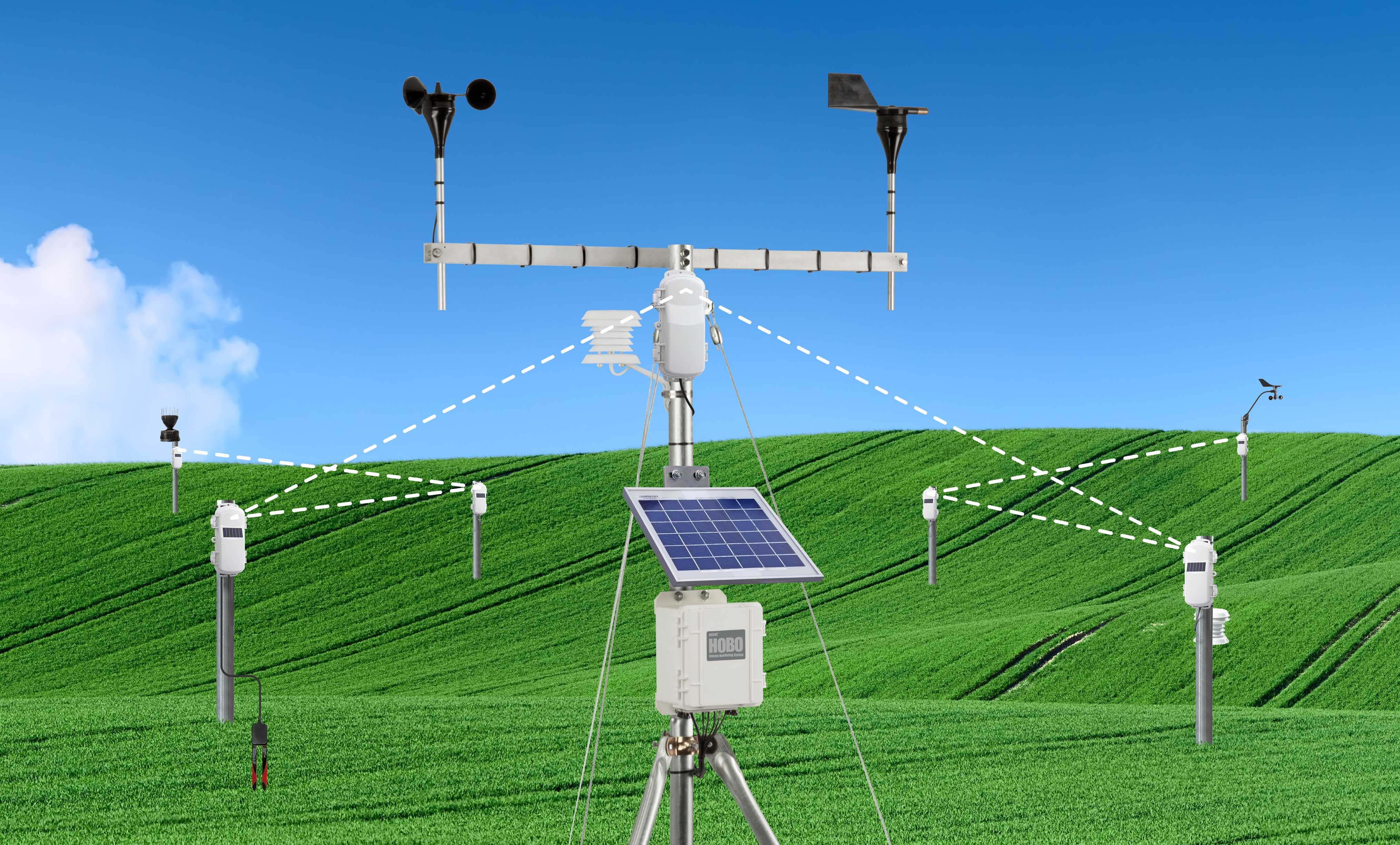The Benefits of Remote Sensor Networks & Monitoring Systems
Using a remote sensor network puts that crucial, timely information in your hands, and pays dividends in its benefits:
- Energy Savings: Efficient irrigation reduces energy consumption, lowering electricity or fuel costs
- Water Conservation & Costs: Precise irrigation reduces water usage and associated costs
- Reduced Runoff: Pinpointing irrigation requirements minimizes runoff and prevents soil erosion
- Enhanced Crop Health: Properly watered crops are healthier and less prone to disease, reducing the need for water-intensive treatments
With the addition of a remote monitoring station, you can connect your wireless sensor network to the cloud with web-based software like HOBOlink to see and analyze data, giving you even greater visibility and decision-making power. (HOBOlink can send you customized alerts about on-the-ground conditions and gives you 24/7 access to your crop data from anywhere, so you can act quickly. Plus, you can easily connect your data to Integrated Pest Management (IPM) forecasting tools, like NEWA, to help you prevent crop loss.)
BONUS: The optimized water usage and more sustainable farming practices resulting from these monitoring tools mean you save money while protecting our most precious resource—and the environment.

Choosing a Remote Monitoring Solution That Fits Your Needs
Investing in or upgrading your current monitoring system may seem cost-prohibitive at first, but there are affordable solutions out there, and it’s easy to see that the potential benefits to your bottom line are huge. Data-driven decisions are your key to staying competitive, so when selecting a remote monitoring system for your farm, you want to consider the total cost of ownership (and benefits) over time.
Considerations For Wireless and Remote Sensor Networks
In addition to what you specifically want to measure and how granular you need the data to be, you’ll want to consider:
- Ease of installation: How intuitive and efficient are the setup and configuration features?
- Scalability: How many sensors can the system support? Can the system accommodate future growth and additional monitoring needs?
- Data access: Can the data be accessed using a mobile device or desktop? Is it a web-based system that will give you real-time access to data, and text/email alerts if sensors fail or conditions are critical so you can act quickly.
- How you want to use the data: For agricultural research or education, look for software that can create visual dashboards to best share your data and conclusions.
- Long-term costs: While initial costs are important, ongoing maintenance and sensor replacement should also be factored in.
Monitoring with a HOBOnet Remote Sensor Network
Designed by Onset, a HOBOnet remote wireless sensor network offers a versatile solution that directly addresses these considerations, with research-grade sensors and remote stations that are reliable, accurate, low-cost, scalable, and easy to use. Each HOBOnet monitoring system supports up to 50 different sensors, which gives you the flexibility to choose from a range of measurements and tailor the network to your particular needs. The addition of a remote station gives you the ability to send your network data to the cloud and access it from anywhere for analysis, setting alarm notifications, sharing with stakeholders, and more.
HOBOnet Sensors and Remote Monitoring Stations
- Soil Moisture Sensors: Available in both single- and multi-depth options, HOBO soil moisture sensors are ideal for drip and sprinkler systems, providing real-time data on soil moisture levels.
- Weather Conditions: Monitor wind speed, wind direction, and rainfall to know when it's safe to apply pesticides or leverage rain water for irrigation.
- Flow Meters: Flow meters are essential to accurately measure water consumption in flood and center pivot systems.
- Water Level: Monitor available groundwater, and how much water is in your tank, reservoir, and irrigation canal.
- Leaf wetness: Measuring leaf wetness tells you how much moisture is present in your crop canopy, indicating when you need to spray, or when conditions put your crops at risk for disease.
- Temperature & Relative Humidity (RH): Track microclimate temperatures and RH to customize your irrigation frequency and/or quantity, monitor the temperature of your storage facilities, safeguard crops from extreme frost events, and more.
Your choice of sensors and the way you set up your system depends on your specific irrigation system, what conditions and areas you need to monitor, and your budget. Do some research and talk to other farmers too. For example, for most commercial farms, a web-based weather station with wireless sensors is ideal, as it provides flexibility in sensor placement across a wide area. See this use case to see how HOBOnet was used for crop planning.
Next Steps For Optimizing Your Irrigation
Getting data using a HOBOnet wireless sensor network provides insights into your irrigation efficiency that just aren’t possible without smart monitoring technology. With soil moisture and other sensors placed strategically in your fields, you’ll know exactly how much water your crops are getting and when they need more.
This is just a quick overview of how a system like HOBOnet can empower and improve your decision-making by putting all the data you need in the palm of your hand.
Want to learn more? See our white paper on Choosing a Wireless Field Monitoring System
Ready to optimize your irrigation? Get in touch with our team, and we can help you put together a remote field monitoring system that’s perfectly suited to make your farm more sustainable…and profitable!

